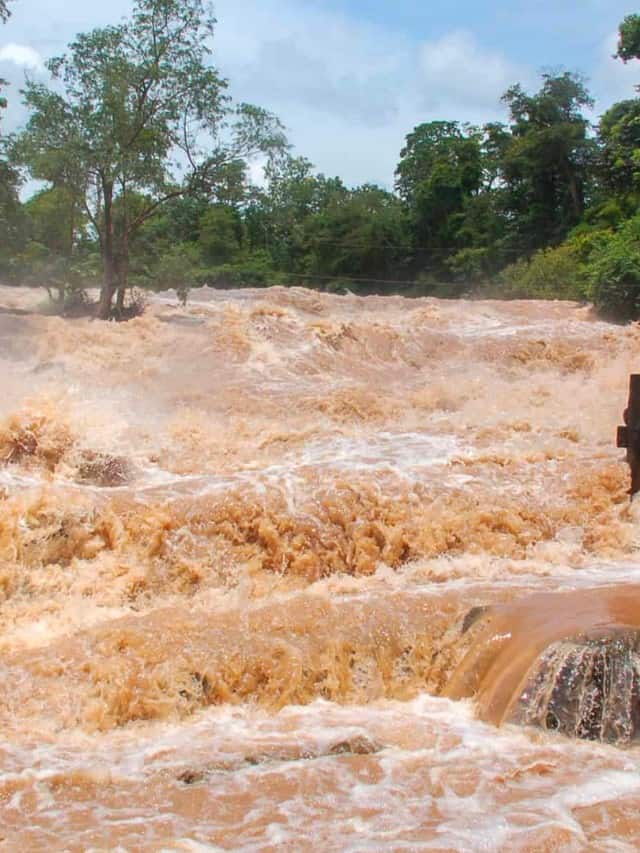The Mississippi River serves as the common thread that weaves together all of America. It serves as the setting for numerous American stories. This magnificent waterway is also a perennial source of inspiration for artists and musicians from Minneapolis to the Louisiana Delta via St. Louis.
It’s important to note that this along America’s best-known river flows through 10 states, including Minnesota, Wisconsin, Iowa, Illinois, Missouri, Kentucky, Tennessee, Arkansas, Mississippi, and Louisiana. The “interconnectedness” of the river, which drains 41% of the country and transports more water than any other river in America, continues to be its most important feature.
What Happened to the Mississippi River in 1993?
A catastrophic and slow-moving flooding disaster that affected the midwestern United States over the course of three months in the summer of 1993 had long-lasting effects on the economy. In nine states in the Midwest, about 17 million acres were inundated during this time. It began in June and ended in August of the same year. The Great Flood of 1993 affected nine states and 400,000 square miles, spanning nearly 200 days in certain places.

In the summer of 1993, rainfall along certain states along the Mississippi River exceeded normal amounts by as much as 350%.
©Akarat Phasura/Shutterstock.com
How Did the Flood Happen?
In Missouri and the Upper Mississippi River basin, above-average rainfall led to more moisture in the soil and reservoir levels than normal. A strong trough that covered the Pacific basin from the winter of 1992 to the spring of 1993 was strengthened by a subtropical jet stream that crossed the Midwest, bringing an infusion of precipitation to the already soaked area.
That summer, a pattern of almost constant rainfall developed across the area. This happened as a byproduct of the Midwest’s persistent zonal movement of convective complexes. Between June and August, rainfall totals exceeded 18 inches, with peaks of 24 to 38 inches in Iowa, Minnesota, and Nebraska.
This amount of rain exceeded typical rainfall by more than 200 to 350%. The Great Plains experienced rainfall almost daily or continuously throughout July, more than doubling the average climatology of 8–9 days in most areas. This was the most troublesome part of the event. Every day from late June to late July, there was measurable rainfall in the Upper Mississippi River basin. Naturally, water levels began to rise, especially in the Mississippi River.
The Damage of a Massive Flood
The Flood of 1993 wreaked havoc on Midwestern river cities. This caused billions of dollars in damages and scores of fatalities. The river was a few feet below the top of the St. Louis flood-wall and lesser levees were overrun all through the area on the Missouri and Mississippi rivers.
Across from St. Louis, close to Columbia, Illinois, a levee burst on August 1, 1993. This allowed the river to crest and flood 47,000 acres of land. A few days later, authorities made the decision to breach the Mississippi River’s stronger levee in order to let water back into the river. Although several residential streets were flooded as a result of the scheme, many lives were saved by this strategy.
Virtually all of the 700 agricultural levees along the Missouri River that had been erected privately had been over topped or damaged during the flood, which in some places continued into October of that year. By the time the floods eventually started to recede, the Great Flood had claimed 50 lives.
The Mississippi flood of 1927 may be the only event to surpass the 1993 flood as the worst flooding episode in American history. The 1993 flood is frequently listed as one of the most devastating natural disasters in American history.
Can It Happen Again?
A repeat of the catastrophic flood of 1993 could occur, according to scientists who have researched it. However, they disagree about how likely it is to happen. The Mississippi River rose to a height of 49.6 feet in St. Louis during the summer of 1993, which is the highest flood to ever occur there. However, experts have noticed an increase in the frequency of torrential rainfall and high flood levels, which may be related to climate change.
For instance, severe flooding at Cape Girardeau at the beginning of 2016 surpassed the flood record from 1993. Reliable flood estimates are crucial because they could prevent floodplain development, which adds to the narrowing of rivers and, consequently, flooding. However, if a flood at least as bad as the one in 1993 were to occur soon, the U.S. Army Corps of Engineers (USACE) would be most worried about how well towns could safeguard themselves.
Up Next
- Watch An Enormous Flash Flood Form In an Instant, Carrying Thousands of Trees
- $1 Billion+ Per DAY: How the Mississippi River Helps Grow America
- This is the Deepest Point on the Mississippi River (WOW!)
- Discover Incredible Details About The Mississippi River’s History
The photo featured at the top of this post is © iStock.com/Willard
Thank you for reading! Have some feedback for us? Contact the AZ Animals editorial team.






